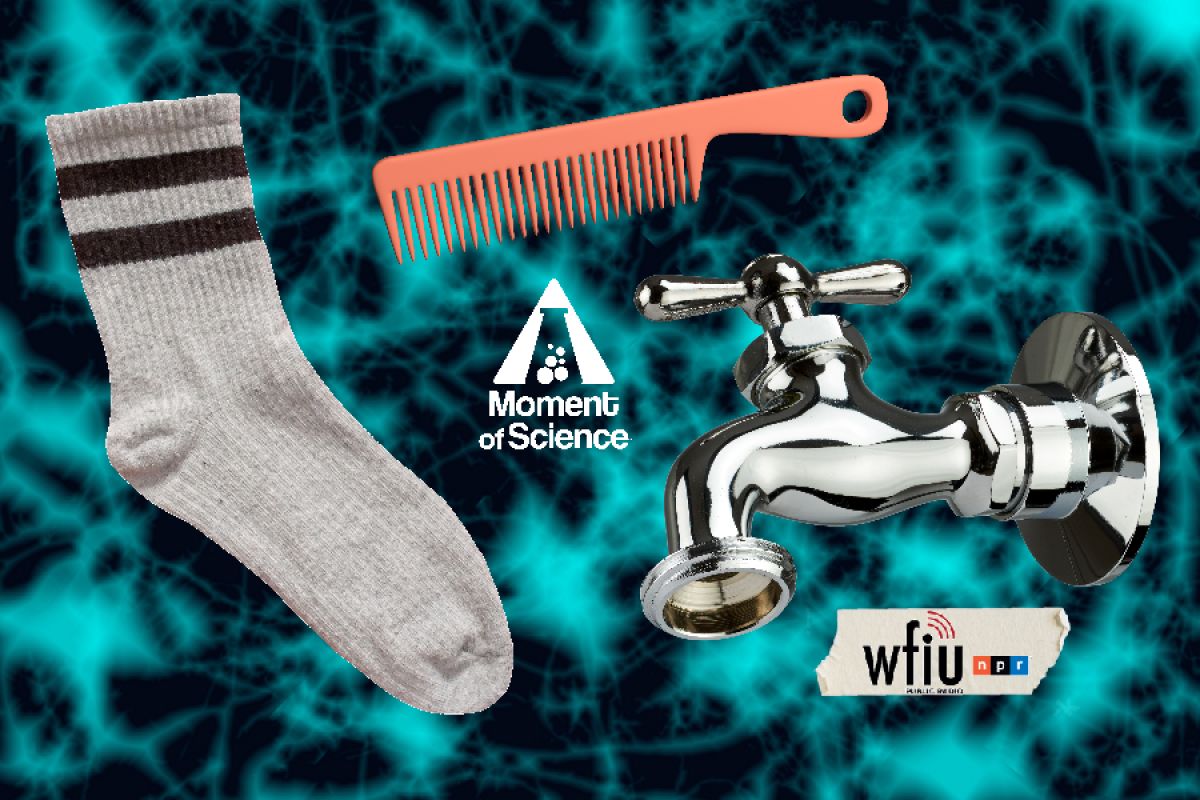On a day of cold, dry weather, turn on the bathroom faucet, just enough to get a stream of water the diameter of a pencil lead. Now, rub a comb on a wool sock. Slowly bring the teeth of the comb near the water stream. If the conditions are right, the comb attracts the water. You may be able to bend the water at an angle of 90 degrees or even more. Of course, this happens because you’ve given the comb a charge of static electricity by rubbing it on the wool sock. But why should a charged comb attract water?
It happens because water molecules are asymmetrical. One side of each water molecule has a positive electric charge, the other side, a negative charge. Remember that in the world of electricity, like charges repel and opposites attract. If the comb has a negative charge, it’ll attract the positive side of each water molecule and repel the negative side. So, water molecules will turn around so their positive sides are nearest the comb. But there’s more.
The electric force field gets stronger as you get closer to the tip of each comb tooth. Each water molecule’s positive side is a little closer to the comb than its negative side. So the attraction between the comb and the positive side of the water molecule is a little stronger than the repulsion between the comb and the negative side of the same molecule. The attractive force therefore wins out and the water molecule is drawn toward the comb.
So, a comb, charged with static electricity by rubbing on a sock, will attract a stream of water. Notice that the sock will attract the stream, too, because the rubbing gives the comb - and the sock - charges that are opposite but equal.
This moment of science comes from Indiana University, with production support from the Office of the Provost.
I’m Yaël Ksander.










